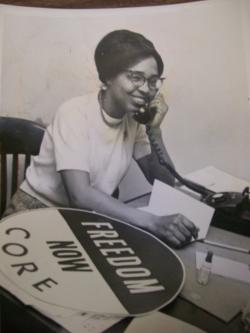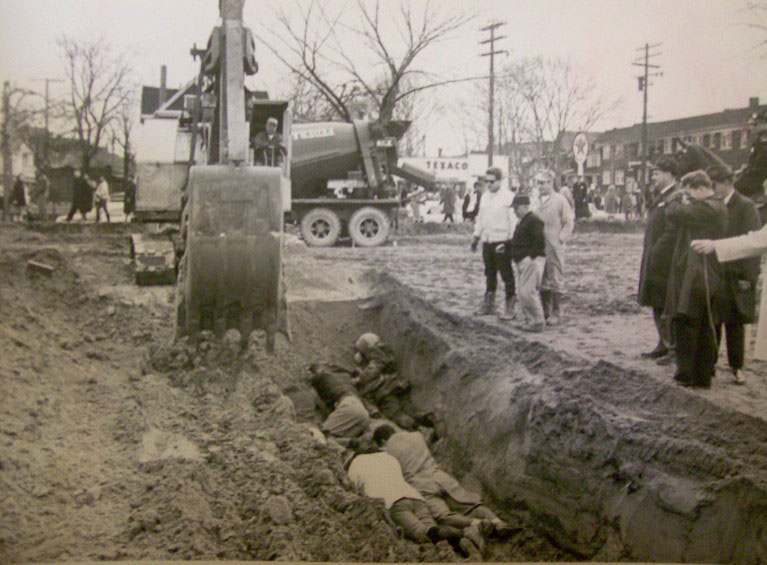Turner and other CORE activists attempting to stop a bulldozer from working on the construction of a segregated school (1964), via Vanderbilt University Library.
By John Perse
Ruth Turner just might be one of the most powerful and influential civil rights leaders in Cleveland history who remains largely unknown to this day.
From a Cleveland Public Schools (CPS) teacher to civil rights activist, Ruth Turner Perot became a leading voice in the 1960s civil rights movement. She helped orchestrate peaceful sit-in protests at the CPS board meetings, provided direction for a successful mass boycott of the CPS schools in April 1964, and worked tirelessly to have the Congress of Racial Equality (CORE) provide support for the mayoral campaigns of Carl Stokes in 1965 and 1967. Of course, Stokes in 1967 would become the first Black mayor of a major U.S. city, thanks in part to Turner’s brilliance and tenacity.
Born in Chicago and educated at nearby Oberlin College, she eventually rose to leadership as executive secretary of the Cleveland chapter of CORE from 1963-66. Having witnessed the major events of the early civil rights movement, including the Greensboro Sit-Ins, the sacrifices of the Freedom Riders, and countless other examples of civil rights activism in Birmingham, Alabama and elsewhere, Ruth dedicated her life to the fight for freedom, equality, and the dignity of African Americans.

Her experiences at Oberlin College in the late 1950s charged her interest in activism. “I felt there was an ivory tower quality to life at Oberlin where people were patting themselves on the back for being liberals, when I don’t think they really understood what being a liberal meant. Being a liberal was a movement started by people who were disenfranchised and oppressed, so I was trying to testify for folks at Oberlin what it meant to be engaged in that struggle.” 1
Turner embraced the concepts and perspectives of the emerging Black Power of the 1960s. As she said, Black Power was “an audacious prideful affirmation of self, without which Negroes cannot assume a respected position in an integrated American society.” 2 Indeed, Turner Perot was described as “The first lady of Black Power” and she “played a large part in defining and articulating CORE’s philosophy of Black Power.” 3
Later, Turner married Antoine Perot, another leader in CORE, and they both became involved in the Harambee Movement in Cleveland. Harambee is integral in Kenyan culture and is a Swahili word meaning “all pull together.” The Harambee movement in Cleveland, so beautifully articulated by Nishani Frazier in her book, Harambee City: The Congress of Racial Equality in Cleveland and the Rise of Black Power Populism, was focused on inspiring community projects and economic development. 4 In 1965, Robert Penn Warren, a noted scholar and intellectual, published a book entitled Who Speaks for the Negro? To gather information for the book, Warren travelled throughout the U.S. interviewing significant people directly involved in the civil rights movement. 5 Ruth Turner Perot was one of those interviewees. But then again, Turner Perot had already spent much time “speaking for the negro” and would continue to work tirelessly for the cause for decades afterward.
